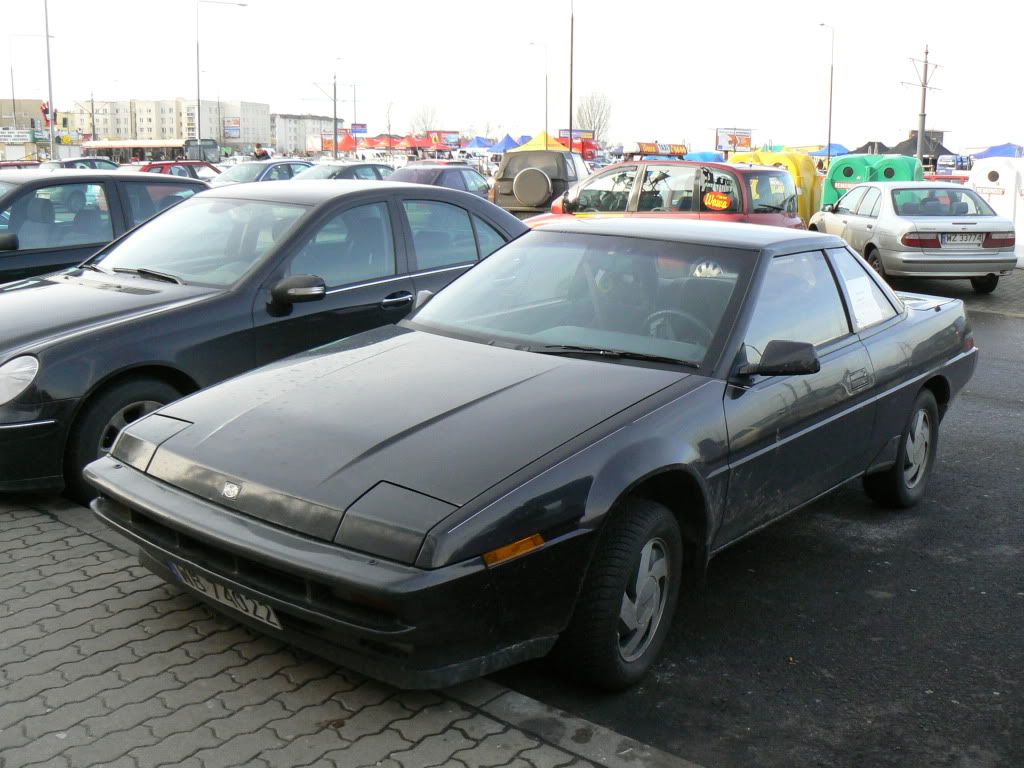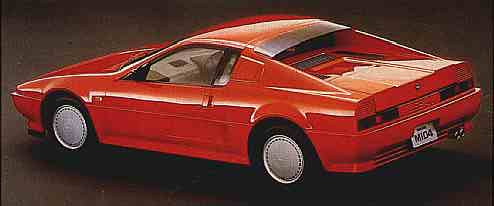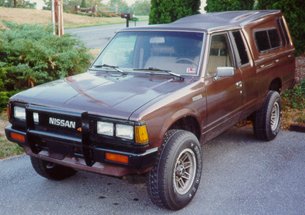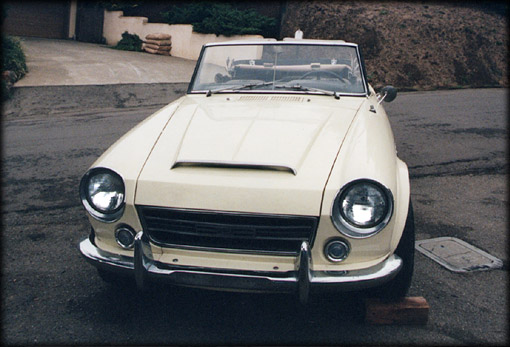-
Posts
2148 -
Joined
-
Last visited
-
Days Won
2
Content Type
Profiles
Forums
Blogs
Events
Gallery
Downloads
Store
Posts posted by Daeron
-
-
Nice Work!!!
The bad news.... to make em come out REALLY nice, you have to sand them again between each friggin coat. Looks like you're doing an awesome job, though!
-
all i have is a Daytona, rather have myself a Z
Judging from the way you speak of it, this Daytona is of the '80s Dodge variety, I presume??? Not the Shelby, Ferrari, Alfa Romeo, Studebaker, or the Dodge Charger Daytona?
-
C6 corvette w/ 180* headers
"Fire AM" with 180* headers (i presume trans-am)
hi-comp 350 SBC w/ 180* headers
porsche 914 w/ SBC 283 and 180* headers
66 ford GT40 at road america in 2009
Fixed your post (no offense or "tone" intended)
-
I hear what you're saying and I want to thank you for your thoughts on the subject Daeron!

You may recall that when I started testing, I connected my pressure guage to a cold engine, basically because I didn't want to be sprayed with hot coolant as I did my work. But it was an excellent starting point to measure the block coolant pressures with a cold engine and then to witness the changes to the pressure as the engine warmed up and the thermostat eventually open. I recorded the values in another thread. Even when the engine was cold and long before the thermostat was anywhere near open, I saw close to 10 psi pressures @ idle IIRC. Man, to be honest with you, I dont remember seeing any pressure on the guage when the engine was turned off after normal operating temp had been reached and yes, there certainly would be coolant expansion due to heat soaking, the very reason why the radiator has a pressure cap on it!
...
Get out there and test your block coolant pressure for yourself and don't just take my word for it. That goes for the electric pump boys too. Maybe I'm missing something and my testing procedure just SUCKS.......or is it just that I have WAY too much time on my hands?
 C'mon, you can do it!
C'mon, you can do it!Awesomeness on a stick, I just couldn't recall if you got a cold weather baseline pressure reading. One of my STRONGEST of my strong points is catching little stupid details that *can* slip through the cracks, and that is all I was trying to do (in addition to making sure *I* wasn't missing or forgetting something; obviously I was.)
I am very well aware that the impeller (propeller) shape, size, pitch and number of blades has all SORTS of subtle and varied effects, but I am wholly ignorant of all those subtleties and thier impacts.
I still want to say that the anecdotal evidence of hundred of electric water pumpers suggests some hole* in this, somewhere, but I never really thought I would be one of those guys anyway and this thread has almost certainly cemented my opinion on that.
*"Some hole" may well be a bunch of track cars using the pump (an the engine equipped with it) in situations that many many of us would call "limited use," which would mean there is NO hole.
Years ago, when I was still in school, my teachers always loved me because I asked excellent questions either for anchoring the subject matter in "reality," or expanding the subject matter ever-so-slightly beyond the scope of our present text or curriculum. I definitely also posted my query hoping to see if anyone was around who could school me about it with some encyclopedic post explaining why just about everything I've ever thought was wrong.

-
Don't hope for too much old boy, 'cause, like the CSR pump, no significant water pressure could be measured on my guage. It seems to me that the electric pumps just don't have enough stonk to do what I'm asking of them.
I've read articles where it's quoted that up to 20 hp is needed to turn the mechanical water at 5000rpm. If I read this bit carefully in the first place, I could've saved myself a lot of cash!!!!. How could an electrically driven water pump, regardless of the design, possibly compete with the stock, mechanical pump requiring that much power and give the 30 psi head of coolant pressure seen on my test guage?
Does this put all aftermarket electric water pumps to rest?(very selective quotation)
Ozconnection: I cannot see that this puts electric water pumps to bed. I can see that you failed to generate any pressure similar to that seen under operating conditions in the engine, but were you running the engine at that time? Heat is Power, and Heat pressurizes the coolant of a running engine as much as the restriction on the flow impelled by the pump.
I would wager that a significant amount of the "energy" used to get coolant up to pressures seen in operating engines is heat energy and not mechanical energy.
You need to measure temperature differences between your engine at various points physical, and load/temp wise, with each setup, as well as radiator inlet/outlet/middle points etc, to make sure no variables are left out when comparing the two side by side to see if one is up to snuff with the other.
At least, I seem to think this is insufficient data to simply ignore the anecdotal evidence of countless users of electrical coolant circulation systems. *I* can't see any problem with my reasoning.. am I wrong?
Edit: I don't want to crap all over your data collection, ozconnection, nor do I have any "feelings" on the matter to push or reason to say one setup is better than the other. This is just my thoughts on the measurements you've been taking, and I may well be missing part of your point (this *IS* rather an extended conversation to review) so in other words, criticism of my own post is certainly welcomed.
-
Oh none of that even matters, give me ten minutes with that car and it'd be one fine and dandy track car candidate.....
The point is just to cringe!!!
-
OH THE DP-1!!! crap...
-
Let's keep it in the Land of the Rising Sun....
#1 - Daily Driver
1975 280Z with a screamin' meemie 12:1 L30 that somehow mystically doesn't mind low octane fuel and ITB's. White.
#2 - All Corners
Subaru XT-6, preferably with the later 3.3L 6 cylinder based off the EJ22. Black.

#3 - High Speed Heaven
RB26DETT powered Z32 with a sensible gear ratio. Pearl, or Dark Blue maybe.
#4 - Mid or Rear
Nissan MID4


Any color that might exist.
#5 - Off the Beaten Trail
1983 1/2 King Cab Datsun pickup, 4x4 hi-lo, napsZ24 engine with a Weber DGV. Black.

(except, king cab:)

#6 - Track Time (track vehicle) Two words: California Coffin!!!!

Well, I'd rather Brabham's car,

but it's not the same THRILL in a safe car.
#7 - WILD CARD 1967 1/2 Datsun 2000 FairLady Roadster. Off-white, with competition package (44 Mikunis and a cam, probly more I am forgetting)



Except with Libra mags on it. Those are all different cars, just trying to illustrate the model and the color. With bumper overriders and yellow/amber round fogs, and a hardtop. The hardtop is either left on the car or left in the garage. That's what tonneaus are for.
-
Car has been reduced to $800.
http://miami.craigslist.org/mdc/cto/1558977172.html
This guy can't GIVE it away!!
-
Did you just measure it?

Didn't you?
-
Is the rubber portion of the dipstick in the right place.
Over the years, they can get loose, especially if the owner is really brutal in pushing the dipstick back in for some repressed phallic reason.
In these instances, the rubber seal stopper on the stick moves, and you can have the wrong 'false high' reading on the dipstick. Compare it to another one. I'm 8500 miles from mine or I'd give you a tip-to-sealing shoulder dimension.
Someone with access to their dipstick can measure it. Just hold your dipstick in your hand and whip out the measuring tape. We can compare dipstick measurements later, when I return...
Wow...
-
Look under the valve cover on the link I gave.
Look closely...
Muahahahahaha!
Rocker actuated valves vs direct actuation?Pseudo hydraulic-mechanical lash adjustment system, hydraulic lifters adjusted with a .002" clearance for NO lifter preload, effectively eliminating any lifter pump up at elevated RPM's?
The most mind-bogglingly supercool mega-awesome awesome awesome thing *I* saw about that engine was the cam drive/timing system as compared to the accessory drive system.
I cannot ruin it for you; you have to go back and look yourself.
-
Not to mention the insanity of using a helicoil on a NUT.
One might say it was crazy, or bonkers, or, whats that other one.....
-
I can just hear it....."OMG, you bought a what?"

Certainly Not!! My old man has run three different four barrels on his 240 shadetree racecar (390, 650 DP and a 750 IIRC?) but I have my preferences. I just like to make it clear that the stock option is not an immediate junker. A four-barrel is a TOTAL mystery to me; side draft carbs I can grok better. anyone who knows 4 barrels because it is what they grew up with, more power to em.
(but yah, you were right on a different level)

-
Have you considered going to the junkyard on a 4 hour long Dizzy Trek to find out what your part is from???
Wish I could help more, but every little bump helps, right?
-
Everything in my head says go with the SUs, but everything south of my belt says go with the Webers. I'm embarrassed to say, they're going in because they look dead sexy whether they make more power or not is immaterial at this point.
R/
D
Acceptable Logic, to be certain!!!

-
Look up "z therapy" and visit their website. They have excellent breakdowns on how these carburetors work. A Youtube search will also yield many significant results:
SU's are very simple little machines, and everybody who has ever played with them either loves them to death or can't stand them. My opinion is that some people simply aren't made for SU carbs.
They operate on a few very simple principles, and have only four moving parts (IIRC: throttle blade, needle assembly, vacuum damper, and float bowl assembly) and are extremely versatile. If you get them, they are almost as useful as a Swiss Army Knife.
-
If you DO add an electric fuel pump, you can use some thick rubber matting or even tire re-treading to insulate the mounting base and help try to avoid some of the noise transmitting through the chassis. Obviously a tire re-tread is a mega-redneck way to do it, but you get the gist.
-
From the 260Z FSM available from XenonS30.com:

I believe numbers 8 and 9 might be of interest to you.
-
How about a "Daeron Mulligan" regarding the L20, L20A, and L20B.
You see, FIRST there was the L20. Theromstat housing was on the other side, and valve cover was way different (More Mercedes-Like with hold down bolts in the center).
THEN came the L20A...
THEN, well later in 4 cylinder L Engine development came the L20B, and even later the LZ20.
I figured I wasn't going to parse the semantics when he called it an L20, which was NEVER offered in any S30 Platform. It was started with the offering of the L20A.
At least nobody claimed a 'four cylinder Z' they say they personally saw way back when in some guys barn that 'came from the factory that way, all original' (substitute 'Corvair' and the same urban myth exists...)
Semantics? Semantics anyone? And L20 is not an L20A. And I'm sure Alan T. has some photos to prove that one. I know he does! LOL
Oh gawd, I wasn't even considering the Prince motor... Leave me alone

-
Most likely Hot Rod.
Packing Material Magazine!!!
-
SU's were in a magazine article for worst 10 car parts ever lol.
I will try to look for it.
And alot of car magazine editors and writers have ever lifted a wrench in their lives. In fact, most of the ones I have read know more aboutworking on cars than anyone I know. *sarcasm*off*
EFI is great, but only as great as the programming that goes into it. It is alos MUCH more finicky than any well built SUs, requiring clear grounds, good wiring, and far far far more components. I am on the EFI side of the fence here, guys, but I am simply saying that Skinners' Union carburetors are masterstroke of automotive engineering: maximum intake velocity and torque response right off idle, but maximum bore sizing and air flow at full throttle. Consistent and complete fuel atomization guaranteed at any RPM or throttle positioning, and only three moving parts per carburetor. (Throttle plate, needle assembly, float.) EFI has many electronic components that can fail, mechanical wire connections that can corrode.. and if you are talking non-stock EFI, the programming instantly becomes a question mark.
Fully Tuned, the EFI machine will win hands down (and as I said, it is the choice I would call my "preferred" induction myself) but the SUs are top-notch machines.
What magazine was that in? I need to avoid it in the future. SUs are right up there with NACA ducts and an electric starter motor on my list.
-
Uuuuhhhh, my bad.
 I'll just rack that one up to something learned. Keep your mouth shut unless you know for sure. Even though I thought I had that one.
I'll just rack that one up to something learned. Keep your mouth shut unless you know for sure. Even though I thought I had that one. Sorry guys. I'll try not to let that happen again. Bad info sucks!
Hey, everyone gets a mulligan on the L20A versus L20B.

Besides, I am the king of Foot-In-Mouth here are hybridZ, and despite that I STILL regurgitate much much useful information. Modesty to admit when one might not be right, and humility to say "Duh, I was Wrong!" are the important parts. Noone is right all the time and at least you were trying to help.
-
I love the way the torque curve just keep climbing, and climbing, and climbing.........














Photos of my home port job
in Nissan L6 Forum
Posted
88mm bore and a fairly small-chambered head.... but an e-46 intake manifold? 3 liter with SU's?
Did they measure all the ports individually to give you comparisons from cylinder to cylinder?